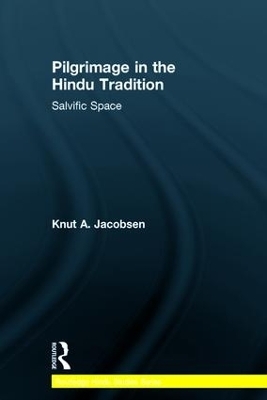
Pilgrimage in the Hindu Tradition
Salvific Space
Seiten
2015
Routledge (Verlag)
978-1-138-84466-7 (ISBN)
Routledge (Verlag)
978-1-138-84466-7 (ISBN)
Salvific space is one of the central ideas in the Hindu traditions of pilgrimage, and concerns the ability of space, especially sites associated with bodies of water such as rivers and lakes, to grant salvific rewards. Focusing on religious, historical and sociological questions about the phenomenon, this book investigates the narratives, rituals, history and structures of salvific space, and looks at how it became a central feature of Hinduism.
Arguing that salvific power of place became a major dimension of Hinduism through a development in several stages, the book analyses the historical process of how salvific space and pilgrimage in the Hindu tradition developed. It discusses how the traditions of salvific space exemplify the decentred polycentrism that defines Hinduism. The book uses original data from field research, as well as drawing on main textual sources such as Mahābhārata, the Purāṇas, the medieval digests on pilgrimage places (tīrthas), and a number of Sthalapurāṇas and Māhātmyas praising the salvific power of the place. By looking at some of the contradictions in and challenges to the tradition of Hindu salvific space in history and in contemporary India, the book is a useful study on Hinduism and South Asian Studies.
Arguing that salvific power of place became a major dimension of Hinduism through a development in several stages, the book analyses the historical process of how salvific space and pilgrimage in the Hindu tradition developed. It discusses how the traditions of salvific space exemplify the decentred polycentrism that defines Hinduism. The book uses original data from field research, as well as drawing on main textual sources such as Mahābhārata, the Purāṇas, the medieval digests on pilgrimage places (tīrthas), and a number of Sthalapurāṇas and Māhātmyas praising the salvific power of the place. By looking at some of the contradictions in and challenges to the tradition of Hindu salvific space in history and in contemporary India, the book is a useful study on Hinduism and South Asian Studies.
Knut A. Jacobsen is Professor in the History of Religions at the University of Bergen, Norway. He has published widely on religions in South Asia and in the South Asian diasporas.
Introduction 1. Concepts and Sources 2. Salvific Space, Narratives and Space as Divinity 3. Origin of the Hindu Traditions of Salvific Space 4. Growth and Omnipresence of the Hindu Traditions of Salvific Space 5. Narratives and Doctrines of Salvific Space: The Example of Sage Kapila 6. Structure of Salvific Space: A Pluralistic Pilgrimage Tradition or why there is no Mecca of Hinduism 7. Contradictions and Challenges
| Erscheint lt. Verlag | 21.8.2015 |
|---|---|
| Reihe/Serie | Routledge Hindu Studies Series |
| Zusatzinfo | 20 Halftones, black and white; 20 Illustrations, black and white |
| Verlagsort | London |
| Sprache | englisch |
| Maße | 156 x 234 mm |
| Gewicht | 294 g |
| Themenwelt | Geisteswissenschaften ► Religion / Theologie ► Hinduismus |
| Sozialwissenschaften ► Ethnologie | |
| Sozialwissenschaften ► Soziologie ► Spezielle Soziologien | |
| ISBN-10 | 1-138-84466-7 / 1138844667 |
| ISBN-13 | 978-1-138-84466-7 / 9781138844667 |
| Zustand | Neuware |
| Informationen gemäß Produktsicherheitsverordnung (GPSR) | |
| Haben Sie eine Frage zum Produkt? |
Mehr entdecken
aus dem Bereich
aus dem Bereich
Worshipping the Eternal Mother at a North American Hindu Temple
Buch | Hardcover (2024)
Oxford University Press Inc (Verlag)
CHF 136,00


